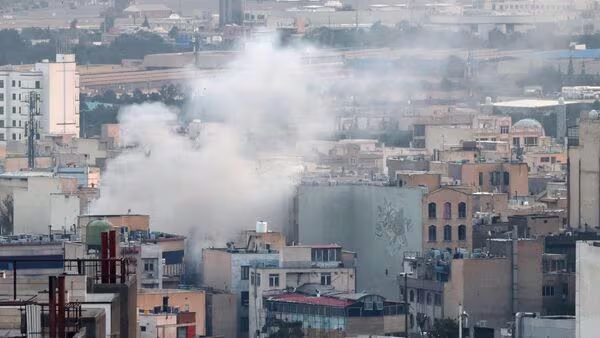Smouldering ruins speak of survival: the silent aftermath of war-torn Iran as Indian students make it home. Photo Credit: AFP
In a swift and coordinated response to the escalating Israel-Iran conflict, India has successfully airlifted over 300 of its citizens from Iran, including a large number of students stranded in high-risk zones. The evacuation comes amid a tense regional standoff, with Iranian airspace closed and the conflict showing no signs of de-escalation.
A Race Against Time
The Indian government activated its emergency response network as tensions rose dramatically after Israel’s targeted strikes on Iranian facilities triggered counterattacks. Indian citizens, particularly medical and engineering students studying in cities like Tehran and Qom, found themselves caught in the middle of a potential war zone.
Land evacuation routes through Armenia and the UAE became critical lifelines, with the Ministry of External Affairs confirming that several batches of citizens have been brought back safely. An estimated 10,000 Indians reside in Iran, with around 6,000 being students.
Students Share Harrowing Tales
Among the most affected were Indian students studying at Tehran University of Medical Sciences and Shahid Beheshti University. One MBBS student described waking up at 3:20 am to the sound of explosions. “The building shook, and we could hear jets and drones flying overhead for hours,” she recalled. Another student from Hyderabad said, “We spent three nights in the basement with no electricity, minimal food, and constant fear.”
A group of nine students from Karnataka, who were unable to return home due to cancelled flights and blocked roads, appealed to their state government for urgent help. In one case, fragments from a missile hit a dormitory in Tehran, injuring two students from Jammu and Kashmir. These students were later moved to Qom, where embassy officials coordinated their evacuation.
Embassy Response and Helplines
The Indian Embassy in Tehran has been operating round the clock, setting up emergency helplines and Telegram and WhatsApp channels to provide updates and collect citizen details for rescue operations. Evacuation coordination with Iranian authorities was complicated by closed airspace, but land borders to Armenia, Turkmenistan, and Azerbaijan remained open after diplomatic efforts.
The embassy also issued travel advisories and offered relocation support to Indian nationals in more volatile regions. The Indian government has emphasized its commitment to ensuring every citizen’s safety, especially students vulnerable to the evolving crisis.
International Dynamics and Regional Tensions
The situation in Iran is part of a broader geopolitical escalation, with Israel’s Operation Rising Lion striking critical Iranian infrastructure and prompting Iran to retaliate with Operation True Promise 3. The hostilities have led to widespread blackouts, transportation shutdowns, and a breakdown of basic services in affected cities.
As the Israel-Iran conflict deepens, the risks to civilians – including foreign nationals -have increased significantly. The Indian government’s swift action reflects lessons learned from past crises, including the Ukraine evacuation and the COVID-19 repatriation efforts.
Call for Swift Resolution
Evacuated students expressed relief at being home but urged for a long-term diplomatic resolution. “We came to Iran to pursue our dreams of becoming doctors. We never imagined being caught in a war zone,” said one young evacuee upon arriving in Delhi.
With over 1,500 Indian nationals still awaiting evacuation and the regional situation far from stable, the focus remains on expanding safe passage corridors and ensuring that all citizens are accounted for and supported.




